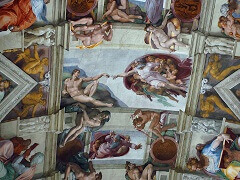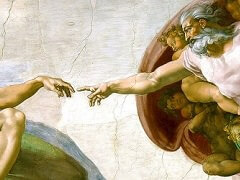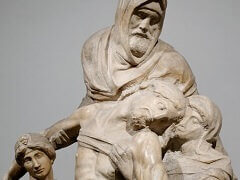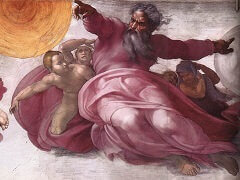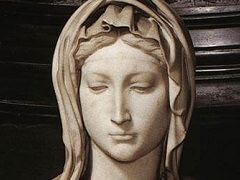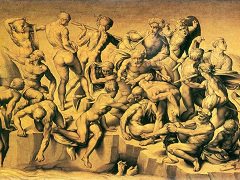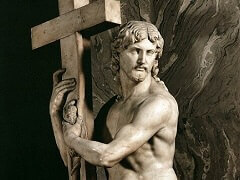Madonna of the Stairs, by Michelangelo
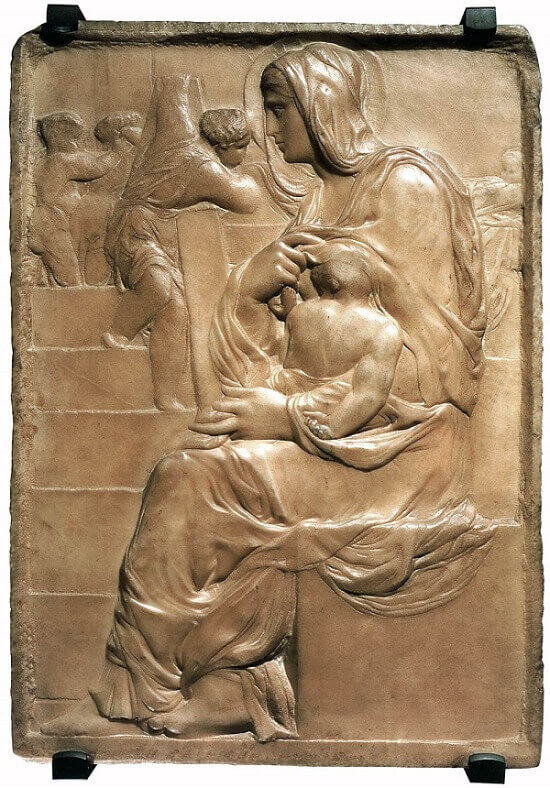
Completed around 1491, Madonna of the Stairs is the earliest extant work of Michelangelo. The waxy, translucent slab, like alabaster, is reminiscent of Desiderio. Carved in
"rilievo schiacciato" it represents Michelangelo's exploration of quattrocento techniques. In both form and content we see the influence of Greek "stelai". The Madonna's face is in classical
profile and she sits on a square block, Michelangelo's hallmark. He chose not to show the Child's face but placed him in an odd position, either nursing or sleeping and encased in drapery,
suggesting protection. In the background, four youths handle a long cloth, identified either the one used to lower Christ from the cross or a shroud.
In Madonna of the Stairs, Michelangelo used the chisel more as a pencil to create the illusion of the Madonna's gown as it barely rises from the background. By subtly dissolving the
barrier between object and background, the artist introduces dimension and depth as mere suggestions. The classical Roman character of Mary's profile finds its roots in fifth-century Greek
grave designs.
Extraordinary in Madonna of the Stairs is the fully mature, muscular power of the Christ Child's right arm and back, a pose that would be echoed in the sculpture Day in the Medici Chapel.


